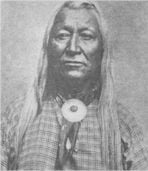Hunkpapa Sioux Tribe
Hunkpapa Tribe, Hunkpapa Indians, Hunkpapa Sioux Indians. ( Hunkpapa is variously interpreted ‘at the entrance, ‘at the head end of the circle,’ ‘those who camp by themselves,’ and `wanderers’). A division of the Teton Sioux. From the meager data relating to the history of this band it seeing probable that it is one of comparatively modern formation. When Hennepin, in 1680, found what are believed to have been the Teton as far as the banks of the upper Mississippi, no mention of the Hunkpapa at that early date or for 100 years there after can be found unless it be under some … Read more

